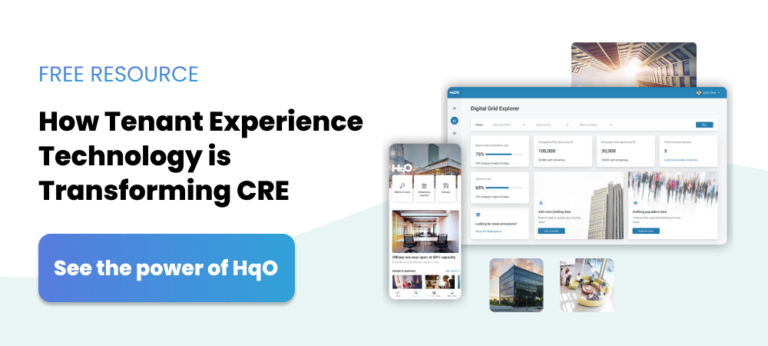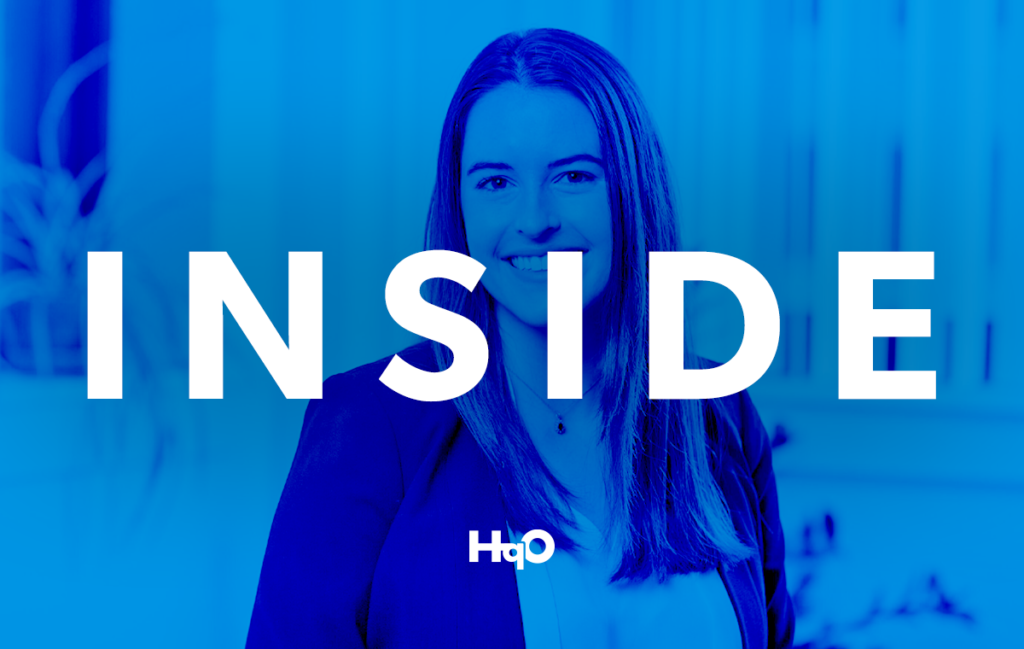How you think about your tenant engagement approach can determine your successes or failures as a business.
In today’s commercial real estate (CRE) landscape, this rings true more than ever. Due to the sudden boom of technological innovation for the office and business shifts towards more flexible workplace models, the industry has reached a point where improvements to the physical office environment can no longer enhance the tenant experience on their own. Now, tenant meaning has taken on a whole new life as the success of office portfolios depends on providing consumer-first experiences, no matter where people work.
Truly investing in your end-users is the smartest way to attract and retain tenants and differentiate your assets. To achieve the best results, technology is needed to bridge the gap between the physical office and the digital workplace, while also connecting dispersed employees in a way that is both engaging and thoughtful.
Let’s dive into why tenant engagement matters, the benefits of an official tenant engagement strategy, and how to make your tenant experience thrive.
CRE Needs Tenant Engagement Ideas
The simple fact remains that the CRE value equation has changed forever: our current experience economy has prompted a shift away from buildings themselves to the people who occupy them. Due to the current influx of remote and hybrid work models, CRE offerings can no longer just be an office building. Many workplace cultures around the globe have already extended beyond physical infrastructure to open up digital integrations, programming, and engagement possibilities for companies and their employees. Now, landlords need to meet the needs of leading employers with tech-enabled workplace solutions. Those that do will command low capitalization rates, and those that don’t will be left behind.
In the same vein, tenant companies are looking for partners that deliver spaces and experiences that drive productivity and employee satisfaction. With digital alternatives to the physical office, landlords cannot rely solely on the contractual obligation of a long-term lease in achieving customer retention. Moving forward, they will need to win customer loyalty by providing excellent customer experiences, as well as start becoming a technology provider for their customers to create efficient and unique digital-to-physical experiences. These factors combine the right talent with the right data needed to maintain long-term customer commitments and keep portfolios afloat.
A Digital Tenant Experience is a Modern Tenant Experience
Not coincidentally, the rise of tenant experience has also brought the rise of office technologies. Tenant experience technologies help property leaders and teams seize an opportunity to adopt a consumer-first model and embrace the most recent digital disruptions. By blending the physical and digital workplaces, they can create engaging and memorable experiences that differentiate their portfolios and tune into their most important assets: their tenants.
Technologies such as tenant engagement apps and other office space software can not only ease modern-day concerns revolving around safety, communication, and engagement for your existing tenants, but it will also help you strengthen your workplace culture to help attract new tenants by enabling unique digital programming trends.
Offering digital programming to complement your assets can re-shape antiquated engagement models by bringing your building’s amenities directly to the end-user, as opposed to having tenants seek them out on their own. Such modern tenant relations ideas not only strengthen workplace culture but also establish a brand value that extends beyond the office.
For many HqO clients, “going digital” has already led to unique and desirable workplace experiences for both current and prospective tenants. Each client has the power to customize in-app features to fit their specific needs, creating solutions that highlight their building’s individual communities and personalities. These tenant engagement ideas have spanned from offering virtual fitness classes and hosting building-wide events, to gift raffles that show tenant appreciation, to mobile ordering services that cut down on traffic associated with popular on-site food and retail vendors.
Going Beyond Tenant Experience Software: The HqOS™ Operating System
In order to make sure your tenant engagement strategies are modern and effective, you’ll need to find solutions that empower both the tenants who work in your offices and the property teams who run the building. You’ll also need to find partner technologies that play well alongside the existing technology stacks within your building.
Thus, CRE owners require a full tenant experience platform, also known as an operating system (OS), to achieve these results and provide enhanced methods of the user experience. With this in mind, we created the market’s first end-to-end tenant experience operating system. HqOS™ consists of three layers: a universal remote for your buildings, a marketplace where you can find and manage pre-vetted systems and amenity providers, and tools that can capture and structure all data on how people use your buildings helps property teams in several ways. Such technology manages all customer-facing technology tools within a building, while empowering teams to activate real connections between people and their properties through digital-to-physical experiences, data-driven decision making, and the fast implementation of innovative asset strategies.
Additionally, HqOS Headquarters provides a single source of truth — a place where these layers can connect seamlessly for easy use. This command center allows property teams to do everything from daily content creation to strategic technology planning, as well as to rapidly deploy and configure data-driven tenant engagement strategies across their portfolio. Together, these features provide CRE leaders with the flexibility, efficiency, and intelligence required to operate a modern portfolio.
To learn more about tenant relations ideas and strategies, download our free Industry Outlook.




